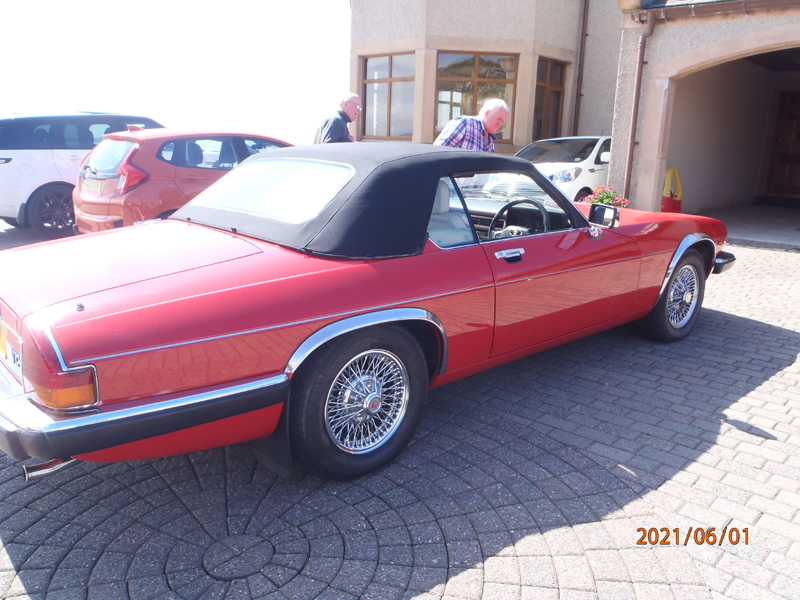
1989 XJ-S V12 Convertible
Having had quite a few Jaguars and Daimlers over the years, the most recent being a 2000 Daimler Super V8 (X308) which we enjoyed for 6 years and coupled with the fact that a friend here in Orkney had asked to be the next custodian of that particular car, I decided to move away from the marque and concentrate more on restoring some of the motorcycles I'd had around for a number of years. This coincided with rescuing a rather sad looking 1993 MG RV8 3.9 at the same time as having lots of fun with a Mazda MX-5 NB Icon, with its 6 speed box, Torsen LSD and near 50/50 weight distribution - how did I manage to ignore those cars for so many years?
The situation changed unexpectedly and quite by chance in June 2021, when we
were visiting a friend here in Orkney who mentioned that he was thinking of
making a bit more space by selling a couple of the cars from his collection. I
had seen both of these cars before, along with many other exotic 2 and 4 wheeled
toys in his luxuriously heated, tiled floor garage but only one of them had ever
realistically been very quietly on my radar - a 1989 XJ-S V12 Convertible with
under 20,000 genuine miles recorded and only 300 of those have been added in the
last thirteen years. I'd not even mentioned to Christine that if this car ever
came up for sale, I might be tempted - there was no real need as I never
expected it to! The other car? Well that's a Series 3 E Type roadster in near
concours condition but it's not a model I have ever lusted after.

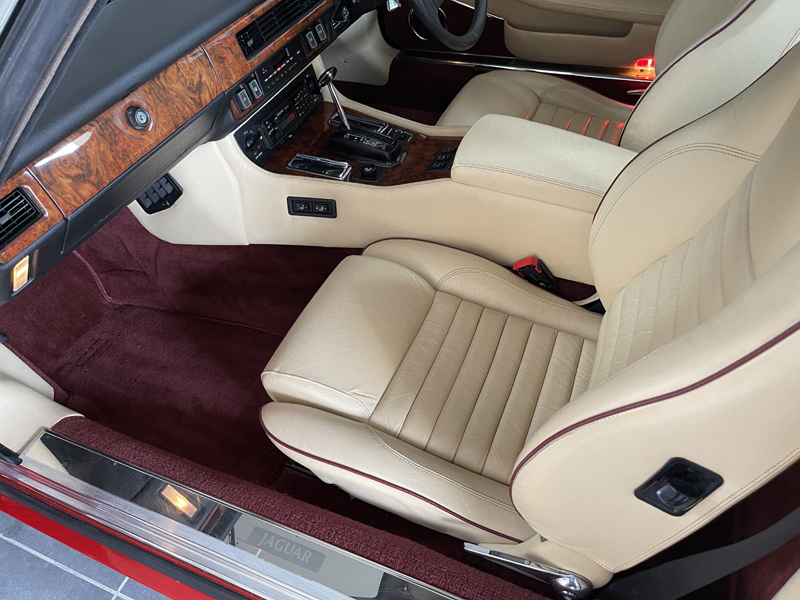
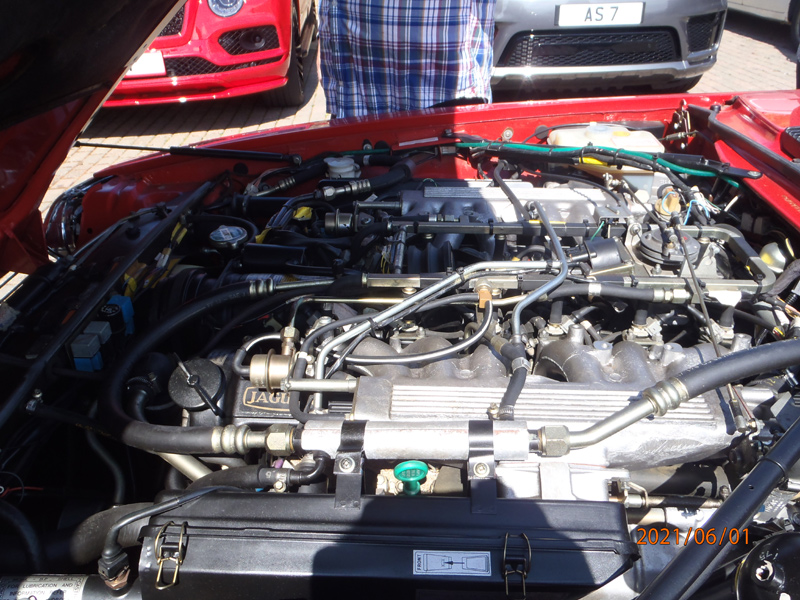
We had a 1986 3.6 XJ-SC (Cabriolet) for 24 years which I built from a new
bodyshell and a damaged, low mileage donor car so I knew most of the running
gear problems I might face. We have also enjoyed two Series 3 V12 Sovereign
saloons and I am comfortable with the complexities of that otherwise fabulous
engine. To sit in any car behind that silky smooth, barely audible power unit
even when coupled to a now rather old fashioned 3 speed GM400 box is an
experience to savour and these must still be the cheapest cars available
anywhere with a V12 power unit. Grab one quick before we are all condemned to
being ferried around in a driver-less battery powered Eurobox!
When I examined this XJ-S more carefully - above and below, I was astounded by
its condition - the engine bay was cosmetically as good as a one year old car.
Of course, I do realise that any car which has had very little use will more
than likely come back to bite you some day when used more regularly but with
careful recommissioning and all fluids and filters renewed, most of those other
problems can be addressed as and when they raise their heads.
There are 3 glaring areas which need addressing more urgently, the very first
being the removal of an awful set of chrome wheel arch finishers which are
unfortunately held on with small self tapping screws. Once removed I shall take
great delight in hurling them into the very darkest corner of the re-cycling
skip. It's obviously just me (and maybe a few others too) but why does any
Jaguar lover think that these pieces of bling were an enhancement to Malcolm
Sayer's original design? I really wouldn't want to weld up these tiny holes left
by the removal of the screws but will instead apply a small amount of seam
sealer and touch in with paint, then keep a close eye on those areas. The second
is an earlier owner's addition of bolt on chrome wire wheels - all truly
immaculate but they will definitely have to go to be replaced with the correct
Jaguar OE Lattice type. And thirdly, it has the twin headlight conversion,
although the originals are with the car but as yet I'm undecided about those as
they are in fact far better lights.
It too has the makings of a concours car as it really is very original and
unrestored but that's not really our scene, although we will certainly use it to
attend some of the shows here in Scotland in the years to come, hopefully even
making another trip to the impressive Shetland Classic Motor Show next year.
It will obviously need extensive cavity wax protection to keep it in its present
condition, which will be more involved to gain access than when I did the
Cabriolet all those years ago; that was just a bare painted shell. These days I
use products from Bilt Hamber Laboratories for corrosion protection - perhaps
not the cheapest but certainly easy to apply and very effective. This will
inevitably mean a fair amount of dismantling and trim removal to gain access to
the well known vulnerable areas and no doubt there will be quite a number of
rubber bushes and mountings needing replacement over time, some sooner than
others - after all it is a 32 year old car!
One area of concern on these ageing V12s is the wiring to the injectors and the
hoses to the injectors themselves from the fuel rail. The wiring sits right down
in the 'V' between the heads - often referred to as 'death valley', getting
extremely hot which slowly leads to hardening of the insulation and eventual
failure, sometimes with spectacular incendiary consequences!
The first of our V12 Sovereigns had suffered that fate to some extent before we
bought it as an insurance write off and I replaced the wiring and some injectors
plus a repaint of the blistered bonnet before we enjoyed it for a good few
years. There was one fault on that car which stumped me for a couple of weeks
whilst doing the initial remedial work, solved eventually though; there is a
signal wire going down the rear of the engine, all the way back to the ECU in
the boot and it's a thin coaxial cable with an earthed sheath to prevent
spurious signals. I had checked this wire for continuity a few times as the
engine would fire initially but not run continuously - it turned out that this
same signal wire had been so hot that the sheath had melted to the central core
and was shorting the signal to earth, so the ECU was not aware that the engine
was being cranked and promptly shut off the fuel after initial priming.
The fuel hoses can suffer the same fate as the wiring and with ethanol content
rising to 10% and no doubt more in the future, these will be replaced anyway; my
choice would be with one of the comprehensive kits available from Mr Injector.
The engines themselves have proven to be very long lived, providing of course,
that oil and coolant changes have always been attended to in a timely manner.
Agreed, they are complicated cars but a methodical approach often makes them
easier to work on than some of their modern counterparts with sulking ECUs
refusing to talk to their many neighbours or the sensors nearby, then having the
cheek to send heart stopping, spurious and very expensive sounding messages to
the dashboard display, when all that was needed was a fully charged battery or a
simple message to that effect! Another advantage of the older technology is the
absence of CANBUS, so at least you can substitute some of the bulbs for LEDs
without the usual hassle.
Spark plugs are notoriously 'fun' to change, especially the two at the front
under the A/C compressor! Both of our Sovereigns as bought were fitted with
shiny plugs on ten of the cylinders but the front pair were rusty looking 'other
makes', both cars had a 'full service history!'
Water temperature sensors can fail too - a fault condition which shuts everything down - quite disturbing in lane 3 of a motorway! No problem though if it does happen, providing that you carry a 2.2k ohm resistor in the tool kit and assuming you managed to get back to the hard shoulder without too much drama; after removing the electrical plug from the sensor and sticking the resistor across the terminals in the plug, you are soon on your way having fooled the ECU into thinking all's well again until you are able to replace the sensor. I'm not sure at this stage if the later ECU will just have a substitute value stored in a 'look up table' in case this should happen (like the more modern limp home mode) or perhaps it's still with the old system - but not too difficult to check.
One very pleasant surprise came along recently in the form of a set of four 15
inch Jaguar Lattice wheels from a fellow Jaguar enthusiast here in Orkney and I
have now had a good look at them and although very scruffy and painted gold,
they are still straight and undamaged, so should come up well when blasted, etch
primed and painted in the correct shade of silver but I need to find the
information on the actual colour code first. The original unused spare is still
in the boot for paint comparison if all else fails.
The gas struts on both bonnet and boot lid are very weak so will be first on the
list for replacement - from SGS and there is a small area of wear on the outer
Mulberry piping (code CEM) on the drivers seat bolster but Furniture Clinic
materials will sort that - the rest of the Magnolia interior (code AEM) is near
perfect so just needs a light clean and feeding.
It appears that this car was given some additional rust prevention treatment
very early in its life, which is another reason why it has survived so well. I
first spotted this on an edge of the underside of the bonnet where they appear
to have been treating the inside of the headlamp cavities and some has escaped.
I've had the inspection camera into a few places already with no nasty surprises
so far but will be diligent in my approach to this absolutely vital part of
preventive maintenance.
Judging by the VIN number and the 2 modules on the radiator top panel, this must
be one of the first cars with the change to the Magneti Marelli ignition system
so I think the ECU will be a 16 CU type rather than the older 6 CU which was
fitted to our 3.6 Cabriolet, although now mounted in the passengers footwell
instead of the boot. This newer system has a 2 tier distributor without vacuum
or centrifugal advance - those functions now being handled by the processor. In
effect it's just like 2 separate 6 cylinder engines. This later ECU was a bold
step forward into the digital age but still has many analogue inputs from
sensors, with information from those being fed into onboard analogue to digital
converters for the microprocessor to make sense of.
I have no intention of using the car properly until next spring, to be
absolutely certain that everything has been attended to fully and still not sure
what I will do about the air-con, I'm assuming it will still be on R12 gas at
that age so that will need sorting effectively.
A few days after it was delivered and some of the work has started:
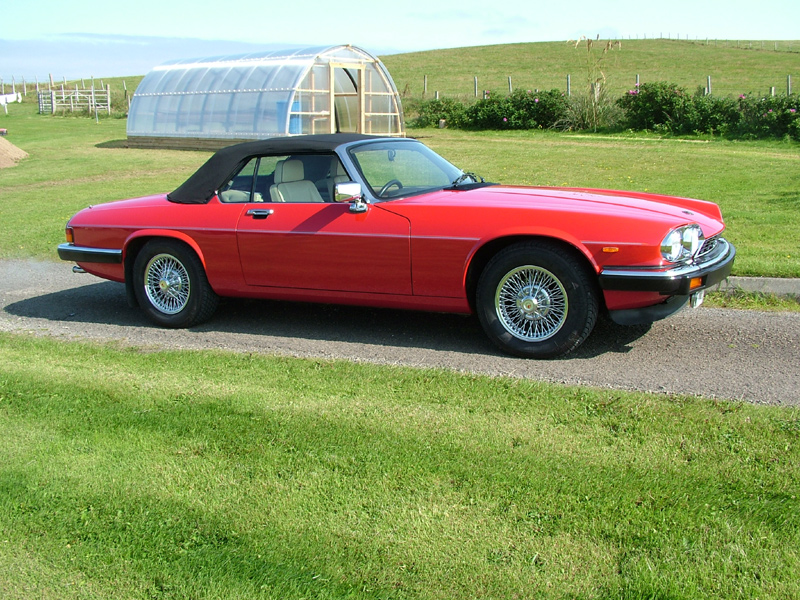
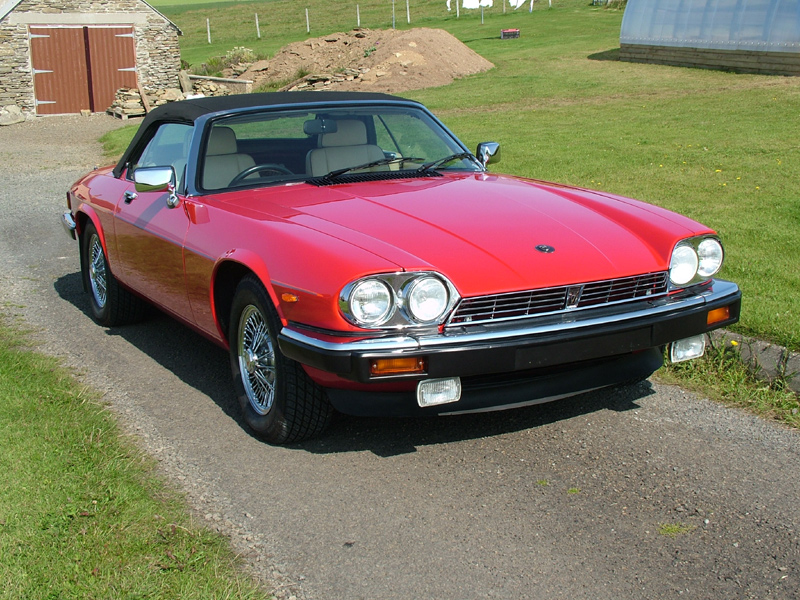
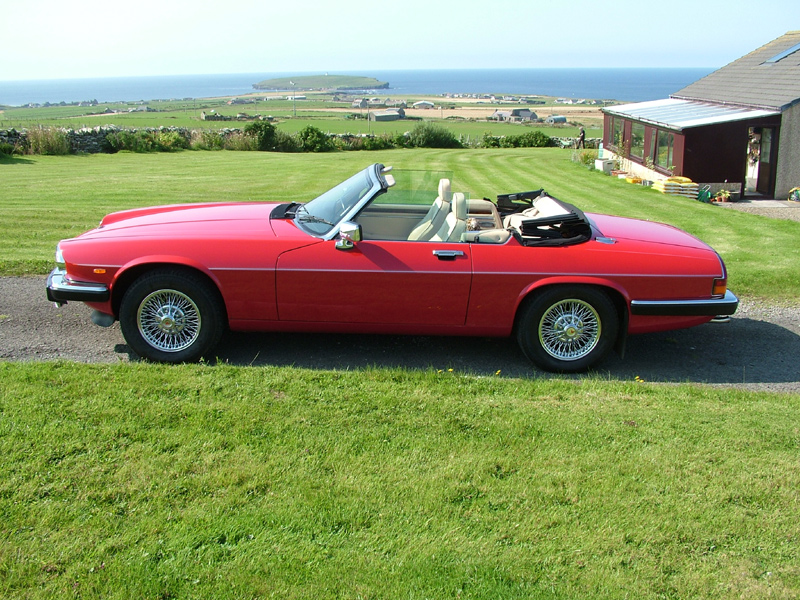
The very low mileage at present is not too much of an issue with us, as although
it will be used fairly regularly it will be some considerable time before it
reaches the 40 odd thousand mile mark - if ever, at which time it will still be
a very low mileage example, hopefully in even better 'almost as it left Browns
Lane' condition.
I'll add a word or two after it takes to the road again and maybe a few thoughts
on the differences when compared with our Cabriolet - assuming I can remove my
rose tinted specs in time to give an honest account.